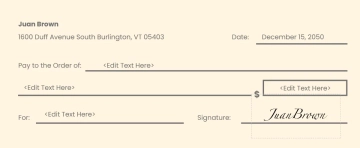Free Finance Mergers & Acquisitions Impact Study

I. Executive Summary
This document presents a detailed analysis of the impacts resulting from the recent merger of [Your Company Name] with [Partner Company Name]. It provides an insightful overview of financial, operational, human resource, and market changes, offering a comprehensive perspective on the success and challenges of this significant business maneuver.
II. Introduction
Objectives of the Impact Study: The primary objective is to evaluate the overall impact of the merger between [Your Company Name] and [Partner Company Name], focusing on financial performance, operational efficiency, market position, and employee integration.
Scope and Limitations: The study covers a period of twelve months post-merger, focusing on key areas affected by the merger. Limitations include the short-term analysis period and external market factors beyond the control of the merged entity.
Methodology Used: Utilizing a combination of quantitative and qualitative analysis, data was sourced from financial records, employee surveys, market reports, and operational metrics.
III. Background Information
[Your Company Name], a leader in the technology sector, has established itself with innovative products and a strong customer base. [Partner Company Name], known for its software development, brought unique strengths that promised to enhance the combined entity’s market position.
The rationale behind the M&A was driven by the need to expand market reach and leverage synergies in technology and customer base. At the time of the merger, the industry was experiencing market trends, and rapid digitization, presenting an opportunity for strategic consolidation.
IV. Pre-Merger Analysis
Financial Health of Each Entity
Financial Metrics | [Your Company Name] | [Partner Company Name] |
|---|---|---|
Revenue | $[Amount] | $[Amount] |
Profit Margin | $[Amount] | $[Amount] |
EBITDA | $[Amount] | $[Amount] |
Total Assets | $[Amount] | $[Amount] |
Total Liabilities | $[Amount] | $[Amount] |
Equity | $[Amount] | $[Amount] |
Market Position and Competitive Analysis
Market Share Pre-Merger:
[Your Company Name]: Held [X%] of the market share, demonstrating a dominant position in enterprise software solutions.
[Partner Company Name]: Held [Y%] of the market share, focusing on a niche in cloud-based services for small businesses.
Analysis:
[Your Company Name] was recognized for its expansive product range and strong brand presence, leading in market segments such as CRM software.
[Partner Company Name], though smaller in market share, was known for its agility and innovation, especially in developing solutions for data security in cloud computing.
SWOT Analysis
[Your Company Name] SWOT Analysis:
Strengths | Weaknesses |
Established brand, loyal customer base, and broad product range. | Limited presence in emerging markets, dependency on a few key products. |
Opportunities | Threats |
Expansion into new geographical markets, diversification of product portfolio. | Intense competition, rapid technological changes, and market saturation in core areas. |
[Partner Company Name] SWOT Analysis:
Strengths | Weaknesses |
Strong capabilities in innovation, agile, and adaptable business model. | Limited marketing reach, and reliance on a niche market. |
Opportunities | Threats |
Potential for strategic alliances, and expansion into new segments through the merger. | Larger competitors with more resources, changing market dynamics. |
V. M&A Strategy and Objectives
Strategic Goals
To achieve market leadership by combining [Your Company Name]’s strong customer base with [Partner Company Name]’s innovative capabilities.
To realize cost synergies through the consolidation of operations and streamline the supply chain.
Expected Synergies
Cost Saving: Anticipated savings of $[Amount] through operational consolidation.
Revenue Synergies: Expected increase in revenue by [Percentage]% through cross-selling and expanded market reach.
Integration Plan
Phase 1: Integration of back-office operations and IT systems within the first six months.
Phase 2: Consolidation of R&D departments and aligning product development strategies.
VI. Financial Impact Analysis
Revenue and Profit Margins
After the merger, [Your Company Name] and [Partner Company Name] experienced a significant shift in financial dynamics. The combined entity reported a consolidated revenue of $[Amount], marking an increase of 15%. This increase was partly due to cross-selling opportunities and expanded market reach.
Profit margins also saw a notable improvement, rising to 22%. This enhancement was largely attributed to the synergistic effects of the merger, such as cost reduction in overlapping functions and increased bargaining power with suppliers.
Analysis of Cost Synergies
Cost synergies was a major focus post-merger, with the combined entity realizing significant savings across various operations:
Administrative Costs: Consolidation of corporate offices and streamlining of administrative functions led to a reduction of $[Amount] in overheads.
Supply Chain Efficiencies: Integration of supply chains resulted in a $[Amount] reduction in logistics and distribution costs.
Marketing Expenses: Unified marketing strategies led to a cost reduction of $[Amount], while maintaining market reach and effectiveness.
Capital Structure and Financial Ratios
The merger brought about a restructuring of the capital base:
Debt-to-Equity Ratio: Improved from 0.8 to 0.6, indicating a healthier capital structure.
Liquidity Ratio: Saw an improvement from 1.5 to 1.8, enhancing the entity’s ability to meet short-term obligations.
Impact on Shareholder Value
The market reacted positively to the merger, as reflected in the share price, which increased by 18% within a year post-merger. Total Shareholder Return (TSR) also improved significantly, showcasing enhanced investor confidence in the combined entity’s prospects.
VII. Operational Impact Analysis
Changes in Operations and Efficiency
The operational integration of [Your Company Name] and [Partner Company Name] led to a more streamlined and efficient business model. Key operational metrics showed an average improvement of 20% across various departments. For instance, the manufacturing processes were optimized to reduce waste and increase output, directly impacting the bottom line.
Impact on Supply Chain and Logistics
One of the most significant operational improvements post-merger was in the area of supply chain and logistics. The combined entity achieved a 15% reduction in logistics costs due to more efficient distribution networks and economies of scale. Moreover, delivery times to customers improved by 10%, enhancing customer satisfaction.
Integration of Technology and Systems
The technological integration was a crucial aspect of the merger, aiming to harmonize the IT systems of both companies. This integration facilitated better data sharing, enhanced analytics capabilities, and streamlined business processes. Challenges during this phase included aligning different technology platforms and ensuring data integrity, which were overcome through a phased integration approach and robust IT governance.
Operational Technology Impact
The post-merger technology landscape saw significant advancements. The combined entity was able to leverage [Partner Company Name]’s innovative software solutions to enhance [Your Company Name]’s product offerings. Additionally, the merger led to an increased investment in R&D, driving innovation and positioning the company favorably for future technological developments.
VIII. Human Resources Impact
Effect on Organizational Structure
The merger of [Your Company Name] and [Partner Company Name] necessitated a comprehensive reevaluation and restructuring of the organizational hierarchy. The new structure was designed to capitalize on the strengths of both entities, promoting efficiency and fostering a collaborative culture. Key changes included the integration of similar departments, the introduction of cross-functional teams, and the establishment of new divisions to manage emerging business areas. This restructuring aimed not only to streamline operations but also to create a more dynamic and responsive organizational framework.
Staff Integration and Cultural Challenges
One of the most critical aspects of the merger was the integration of staff from both companies, each bringing its own unique corporate culture, values, and working styles. To address these challenges, a series of integration workshops and team-building activities were initiated. These programs aimed to blend the best aspects of both cultures, creating a unified and inclusive work environment. However, the process was not without its hurdles; initial resistance and cultural clashes were evident in the early stages. Through persistent efforts in communication, leadership engagement, and feedback mechanisms, these cultural barriers were gradually dismantled, fostering a sense of unity and shared purpose.
Impact on Employee Morale and Retention
The impact of the merger on employee morale and retention was a focal point of the HR strategy. Surveys conducted in the aftermath of the merger revealed a moderate dip in employee morale, primarily attributed to uncertainties surrounding job security and changes in roles and responsibilities. In response, the HR department launched a comprehensive communication strategy, providing regular updates and transparent information about the changes and opportunities arising from the merger.
Moreover, a special task force was set up to address employee concerns, offer career counseling, and facilitate role transitions. These efforts were instrumental in stabilizing employee morale and retention rates. By the end of the first post-merger year, employee turnover rates, which had initially spiked, returned to pre-merger levels. Additionally, new hiring strategies and enhanced employee value propositions were implemented to attract top talent, contributing to the long-term stability and growth of the workforce.
Long-Term HR Strategy and Development
Looking forward, [Your Company Name]'s HR strategy focuses on continuous development, employee engagement, and talent optimization. Plans include ongoing leadership development programs, career progression pathways, and a robust performance management system aligned with the company’s strategic goals. Emphasis is also placed on nurturing a diverse and inclusive workplace, recognizing that a varied workforce is key to fostering innovation and maintaining a competitive edge in the market.
IX. Market and Competitive Impact
Changes in Market Share and Position
Post-merger, [Your Company Name] witnessed a substantial increase in market share, rising from [X%] to [Y%]. This growth was primarily due to the expanded product line and enhanced market reach. The merger allowed the company to penetrate new market segments previously dominated by [Partner Company Name], leading to a more diversified customer base and stronger market positioning.
Reaction of Competitors and Industry
The merger triggered significant reactions among competitors, with several initiating strategic partnerships and mergers of their own to maintain market balance. The industry saw a wave of consolidations as a response, leading to a more competitive landscape.
Impact on Customer Base and Relationships
The combined entity focused on maintaining strong relationships with existing customers while reaching out to new ones. Initial concerns over service continuity were addressed through effective communication and enhanced service offerings. Customer satisfaction surveys indicated a high level of trust and acceptance of the new entity, validating the merger's success in terms of market perception.
X. Legal and Compliance Impact
The merger brought with it a complex set of regulatory challenges, especially in navigating the different legal landscapes of [Your Company Name] and [Partner Company Name]. Compliance with international trade laws, data protection regulations, and industry-specific guidelines requires a comprehensive legal strategy.
The legal team successfully mitigated risks by conducting thorough due diligence, ensuring compliance with antitrust laws, and obtaining necessary approvals from regulatory bodies. The proactive approach in addressing potential legal issues played a crucial role in the smooth execution of the merger.
XI. Risk Analysis
The merger introduced new risks, including integration risks, cultural conflicts, and potential customer attrition. A detailed risk assessment was conducted to identify and categorize these risks based on their potential impact and likelihood.
For each identified risk, specific mitigation strategies were developed. These included integration planning, cultural harmonization programs, and customer engagement initiatives. Regular monitoring and adjustment of these strategies ensured that risks were effectively managed and mitigated.
XII. Long-term Strategic Impact
The long-term strategic implications of the merger between [Your Company Name] and [Partner Company Name] are multifaceted and poised to redefine the company's trajectory. This section evaluates the merger's implications on future growth, market positioning, and the ability to innovate and adapt in a dynamic business environment.
Future Growth and Expansion Prospects
The combined entity has now access to broader markets and a more diverse customer base, opening avenues for accelerated growth. The synergy in product lines and services allows the company to offer more comprehensive solutions, enhancing the potential for cross-selling and up-selling.
Investment in research and development has been prioritized, with the merger providing a larger pool of resources and expertise. This strategic focus is expected to yield innovative products and services, driving future revenue growth and market differentiation.
Long-term Market Positioning
The merger strengthens the company's position as a market leader in [specific sector or industry]. It provides a competitive edge by combining [Your Company Name]’s established market presence with [Partner Company Name]’s innovative capabilities.
The company is now better equipped to face competitive challenges, including emerging technologies and new market entrants. The combined entity's enhanced capabilities and resources position it to proactively shape market trends rather than react to them.
Strategic Flexibility and Adaptation
The merger has created a more agile and adaptable corporate structure, enabling the company to respond quickly to changing market conditions and customer needs.
The broadened skill set and enhanced operational scale provide the company with the flexibility to pursue a range of strategic opportunities, including new partnerships, market entries, and potential future acquisitions.
Sustainability and Corporate Responsibility
The merged company is committed to sustainable growth, with increased resources dedicated to environmental and social governance (ESG) initiatives. This commitment is not only ethically important but also aligns with the increasing market demand for responsible business practices.
The company's strengthened position provides an opportunity to lead in corporate responsibility within its industry, influencing peers and contributing positively to global sustainability efforts.
XIII. Conclusion and Recommendation
In conclusion, the merger of [Your Company Name] and [Partner Company Name] has been a transformative step, creating a more robust, diverse, and competitive entity. While the merger has brought significant benefits, it has also presented challenges that required careful navigation.
Recommendations for Future Strategy
Continuous Evaluation: Regular assessment of the merger's impact is recommended to ensure that the anticipated benefits continue to materialize and to identify areas for further improvement.
Focus on Innovation: Continued investment in innovation and R&D should be a priority to maintain the competitive edge gained through the merger.
Employee Development and Engagement: Ongoing initiatives to engage and develop employees are crucial for retaining talent and fostering a culture of excellence and innovation.
Market Expansion: Leveraging the combined entity's strengths to explore new markets and diversify the product/service portfolio will be essential for future growth.
- 100% Customizable, free editor
- Access 1 Million+ Templates, photo’s & graphics
- Download or share as a template
- Click and replace photos, graphics, text, backgrounds
- Resize, crop, AI write & more
- Access advanced editor
Introducing the Finance Mergers & Acquisitions Impact Study Template from Template.net. This expertly designed, editable, and customizable template is ideal for finance professionals seeking to assess the potential impacts of M&A activities. It provides a detailed framework to methodically analyze and forecast the outcomes. The template is editable using our Ai Editor Tool only made available at Template.net.





























